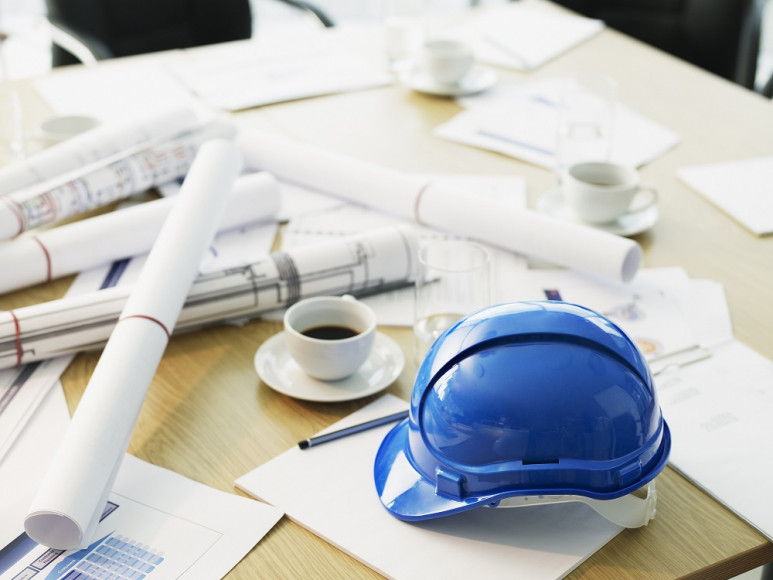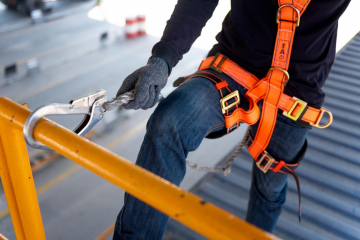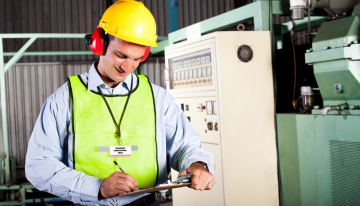Imagine you had the choice between two nearly identical job offers. The only difference: One company had multiple health and safety citations and the other didn’t. Where would you rather work?
It’s hard to imagine anyone choosing the company that cares less about worker safety.
From the employer side, it makes sense to prioritize environmental, health, and safety (EHS). In addition to the human side of the equation, a focus on EHS can help avoid costly fines, lawsuits, and interruptions in productivity.
EHS is especially important for those hiring in the current tight labor market. If you can show prospective employees that you value their health and safety, it can be a deciding factor in attracting top talent.
Each year, OSHA publishes their top 10 most frequently cited standards. These apply to common workplace hazards that can cause injury, illness, or even death. And while OSHA regulations are specific to the United States, these concerns extend globally.
Here are the top EHS concerns based on that list, broken down by type of workplace.
Top EHS Concerns by Workplace
While some workplaces are more potentially hazardous than others—no one would say an oil rig and an office building have the same risk factor—no work environment is inherently safe.
Warehouses, Fulfillment, and Distribution Centers
Powered industrial tracks are a significant hazard in warehouses, as pedestrian traffic must coexist with forklifts and other mobile equipment. It’s important to have proper signage in place, as well as protocols that establish right-of-way for people or machines.
Emergency response plans are a key concern for this type of workplace, which generally hosts a large workforce distributed throughout a massive building. It’s crucial to have response plans for fire, tornado, industrial accidents, and more. The goals should be (in order of priority): to move your workforce out of harm’s way, keep everyone safe, and minimize the interruption to the business.
Electrical safety is one of the most-cited concerns in OSHA inspections, with multiple citations and thousands of dollars in fines per year. High-voltage equipment should be in good condition and have proper safeguards, with access to electrical panels tightly controlled.
Work at height introduces the risk of falling and of objects being dropped from above, as well as the necessity of well-maintained and properly used protective equipment. It’s important to note that “at height” refers to any height over four feet in which there is a risk of falling from an unprotected edge. In other countries the height tolerance may vary.
See OSHA's 2023 National Emphasis Program Updates for more.
Misuse of Personal Protective Equipment (PPE) covers multiple potential violations and safety hazards. Employers may not have identified an existing need for PPE, or may have a policy in place but no oversight to make sure it is followed. In either situation, an EHS consultant can point out the hazards, help reduce friction between employees and management and promote behavior-based safety.
Lack of equipment inspections can lead to citations for machinery and machine guarding, among others. It’s crucial to have daily inspections that include making sure safeguards are in place and in good working order. It’s also important to establish a cadence of preventative maintenance to avoid hazards from broken machinery.
Material Handling and Housekeeping errors are also areas of concern of many employers. Slip, trips, and falls, pallet stacking of materials, and leaving containers in pedestrian paths, are just a few of the concerns under this topic area. Having a program that includes periodic inspection of storage, egress paths, and/or personnel moving materials can help find the compliance concerns that can be addressed by training and programs.
Contractor Management is a critical program that distribution centers are challenged with given the company likely does not own the building and/or has a contractor maintaining the building envelope and environmental services. Ensure that contracts specify that contractors fulfill the local EHS requirements while on-site and report incidents, improvements, and/or concerns to the local EHS management.
Office Buildings and Remote Workers
The risk of getting run over by a forklift is definitely lower in an office than in a warehouse. But there are still plenty of hazards to be aware of and should be in written programs/training.
Emergency response plans are just as important in an office as they are in the field. It’s important to have contingency plans for fire, natural disaster, gas leaks, or power outages. To support these plans, it’s also crucial to have and maintain fire extinguishers, and to make sure egress points have visible signage and are free from obstruction.
Lone and remote worker concerns include the risk of working alone in dangerous situations, like in a data center with extreme heat or a basement home office with inadequate ventilation. The health and well-being of these less visible workers should be part of your overall EHS strategy.
Visitors and contractors introduce their own set of risks, as they may be unfamiliar with your safety procedures. It’s important to make sure emergency exit routes are posted in a highly visible location, and to have all visitors check in to ensure an accurate headcount in case of emergency.
Ergonomic concerns for office workers include the risk of repetitive stress injuries, back and neck injuries from improper sitting or lack of adjustable office chairs, and more. An EHS consultant can help spot these potential problems and offer solutions.
Stay Vigilant to Stay Safe
Business owners need to have a thorough EHS strategy in place. Failure to do so can affect your employees, your ability to hire the best new talent, and your business's bottom line.
An EHS consultant can help you form a strategy that reduces risk and helps you steer clear of incidents and costly citations. Contact us today to get started.
Want more news and insights like this?
Sign up for our monthly e-newsletter, The New Leaf. Our goal is to keep you updated, educated, and even a bit entertained as it relates to all things EHS and sustainability.
Have any questions?
Contact us to discuss your environment, health, safety, and sustainability needs today.







